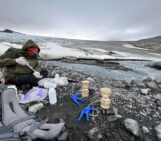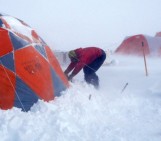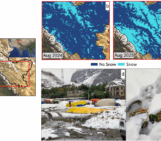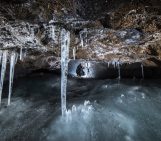Climate research questions tend to focus on the future. What will global temperature be in 2100? Will extreme weather events become more frequent? When will sea level rise render coastal homes uninhabitable? But our understanding of climate processes first comes from observing the past: palaeoclimatology. To get these records, scientists often go on fieldwork to collect samples. But what happens when fieldwork isn’t successful? In this week’s post, Isobel Rowell tells us about her latest fieldwork, and what she learnt when it didn’t go to plan.
Why Ice Cores?
Palaeoclimatology is the study of past climates. By finding places in the world where a climate-responsive material (e.g snow) accumulates over time, we can indirectly determine the climate of the past. I do this using ice cores (see Figure 2). Ice cores tell us about polar climate and atmospheric composition of the past through analysis of ancient snowfall and gas bubbles trapped in the ice. See some of our other posts on ice cores here and here.
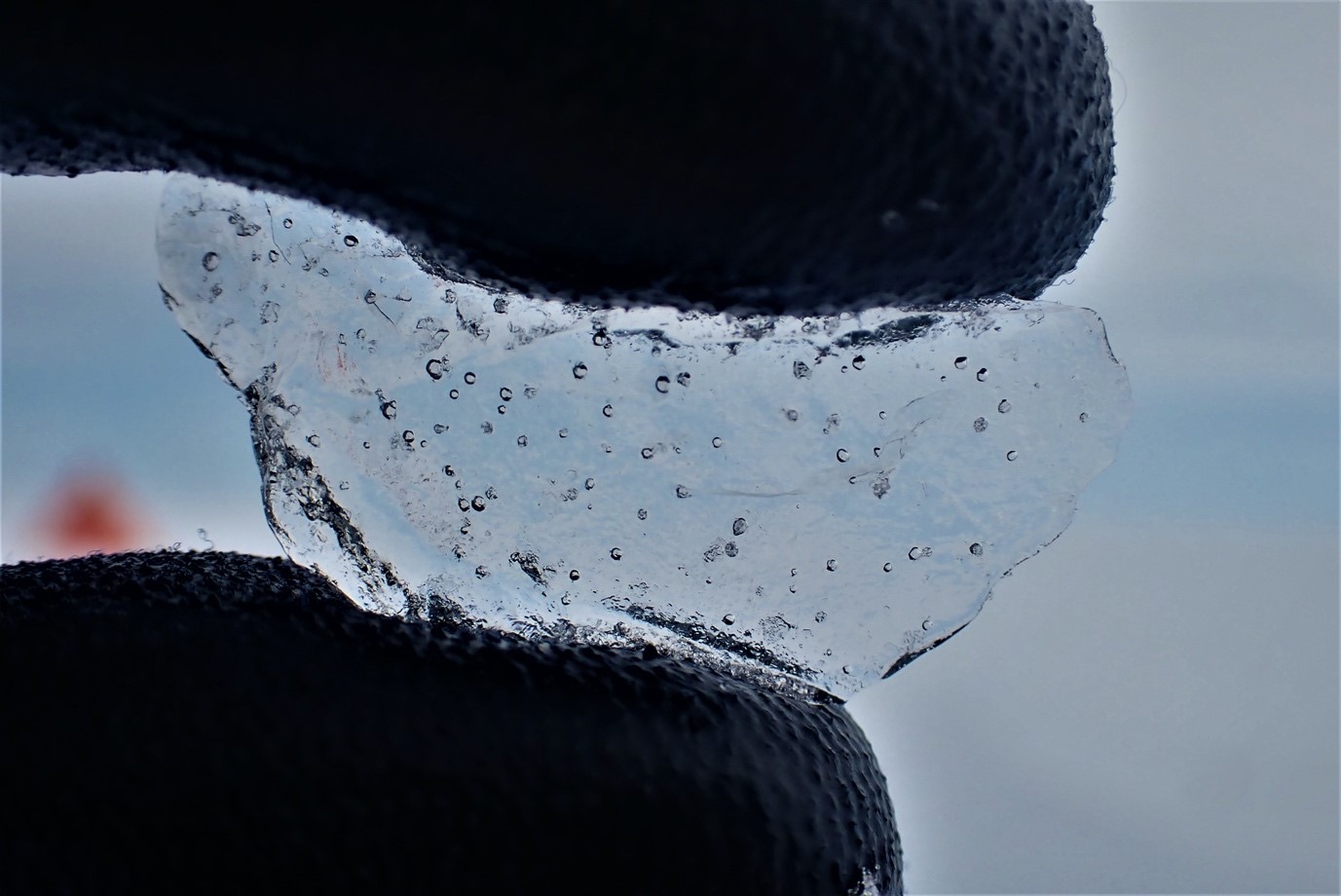
Figure 2: Bubbles of ancient atmosphere trapped inside a chip of ice from Sherman Island. Photo credit: Isobel Rowell
My PhD project is part of the WACSWAIN project, to investigate West Antarctic Ice Sheet stability during the last interglacial period (warm period between two ice ages), around 130,000 years ago. During this time the sea level was 6-9 meters higher than today. Where did all that water come from? The West Antarctic Ice Sheet is a potential culprit.
The WACSWAIN project incorporates two drilling campaigns, the first of which was successfully completed last year and obtained a 651m long ice core. The second campaign, to the Sherman Island, took place earlier this year.
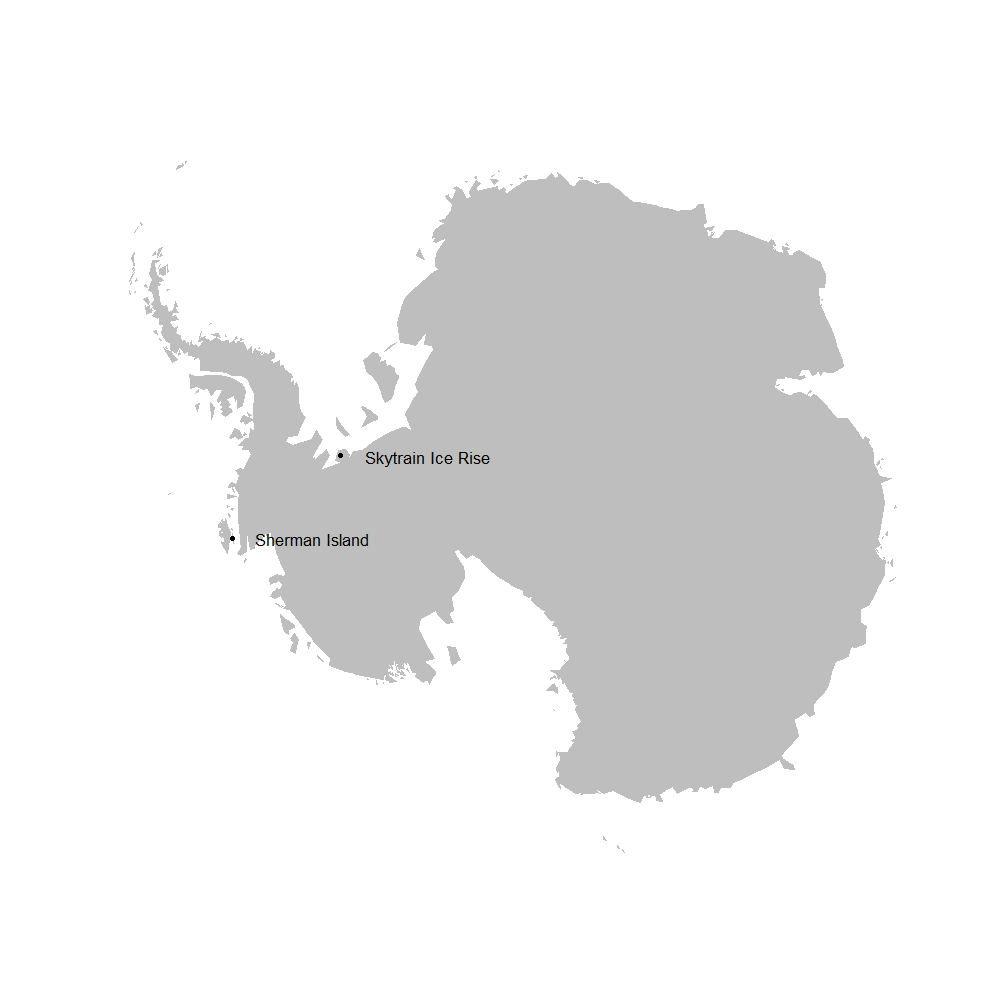
Figure 3: WACSWAIN drilling sites in West Antarctica: Skytrain Ice rise (drilling complete in 2019) and Sherman Island. Credit: Isobel Rowell
The Sherman Island Drilling Campaign
Sherman Island is located in the Abbot ice shelf, near the Amundsen and Bellingshausen seas (Figure 3). We were uncertain of the ice age at the bottom of the Sherman Island site. For this reason, we used the British Antarctic Survey’s Rapid Access Isotope Drill (RAID), which drills quicker than traditional methods by obtaining ice chippings rather than a solid core. This means drilling with a “dry” borehole (without replacing the cored ice with drilling fluid), which allows the borehole to close due to ice flow. The risk of drill entrapment from borehole closure would be mitigated by drilling continuously after reaching a certain depth.
After months of preparation, my fellow ice core scientist and friend Dieter and I arrived at Rothera research station on the Antarctic Peninsula. We had a busy week of training and final preparations before being joined by Rob Mulvaney and being loaded onto a Twin Otter aircraft. It took us two days to reach Sherman Island, where we met our field guides, Tom and Sarah. They had set up a comfortable camp comprising two pyramid tents for sleeping and relative privacy, a clam tent for socialising, eating and leisure (Figure 4), and a toilet tent for… well…
With good weather ahead, we set up the drilling apparatus (Figure 5) and within two days, we were drilling. The team watched as the drill entered the ice sheet (after years of preparation) but there was no time to stand around watching. We soon settled into a rhythm of drilling and sampling ice, swapping out every few hours to warm up. At first, the progress was great- we were drilling 60-80 meters per day and in beautiful sunshine – for the most part.
https://twitter.com/BellaRowell/status/1242391713110507521
What could possibly go wrong?
Sadly, that answer came a little too soon. After some routine servicing, the drill went into the borehole as normal. Soon however, panicked sounds emerged from the drilling shelter. We looked over to see Rob pulling on the winch cable. The drill had reached the bottom of the borehole and wouldn’t move! It was stuck 323m into the ice sheet below. We tried to free the drill but with limited knowledge of why it was stuck, there was no way to devise a solution.
The drill was still rotating in the borehole – a good sign – so we left it running and took valuable borehole measurements while waiting for recovery materials to arrive from Rothera. Any (tiny) chance of freeing the drill got smaller with every passing day and bad weather meant the planes couldn’t reach us. In the meantime, there was nothing to do but enjoy the beautiful environment, and all the leisure activities an isolated field camp brings.
After two days the drill stopped moving. By day three a series of storms were heading to us. When they hit, drilling recovery would be impossible. We had to cut our losses – and the winch cable (Figure 6) – and de-camp, flying away to safety in quite the dramatic exit! The project was over, in such an abrupt and anti-climactic way… it didn’t feel real.
Hope for the best and prepare for the worst
I’ve had time to accept what happened and plan where I go from here. I will still have samples from the Holocene period (the current period of time for the last 12,000 years). While in the field, we also took a radar profile of the ice sheet for additional information. The radar profile gives an accurate indication of the depth of the ice sheet and can reveal layering in the ice, formed from annual snowfall layers accumulating. Events such as volcanic ash deposition or changes in density are also layered, all of which can help to date the ice. Although my goal was to precisely determine the ice-age at the bedrock (the bottom of the ice sheet), I should be able to better estimate it.
There’s a lot of talk about building resilience in grad students- I get this now. While I was prepared that the field campaign might not work out, I wasn’t really ready for it. I know that I need to be better prepared for plans going awry.
My advice: hope for the best and prepare for the worst. This can be applied to many aspects of the academic career path (and life in general), including applying for grants and talking at major conferences. When things go inevitably wrong (who hasn’t faced some setbacks?), allow yourself some time to grieve and freak out. After the drill got stuck, I had time to walk in the most isolated, contemplative setting imaginable and allowed my thoughts to run wild. This helped in the long run. Get your emotions out and then pick yourself back up and do the best with what you’ve got. Solve one problem at a time until you have a PhD thesis. At least, that’s how I hope it will go…
Being in Antarctica, this strange, big and beautiful continent, reminded me of why I do research. I care deeply about the climate, the polar regions and the future of our planet. When travelling there, I was struck by the vast whiteness below me and the seemingly indestructible nature of the planet. Scientists think that, under considerably less pressure than we are putting on it today, much of the West Antarctic ice sheet simply didn’t exist in the past. It is not quite as indestructible as it first seems.
Edited by Jenny Turton
 Isobel Rowell is a PhD student at the Department of Earth Sciences at the University of Cambridge and works with the ice core research group at the British Antarctic Survey. Her PhD work focuses on the spatial variability of Antarctic climate throughout the last glacial cycle by comparing stable water isotope records from ice cores. She tweets from @BellaRowell.
Isobel Rowell is a PhD student at the Department of Earth Sciences at the University of Cambridge and works with the ice core research group at the British Antarctic Survey. Her PhD work focuses on the spatial variability of Antarctic climate throughout the last glacial cycle by comparing stable water isotope records from ice cores. She tweets from @BellaRowell.





